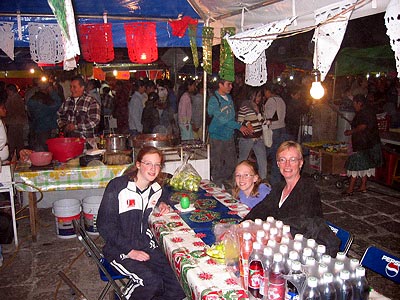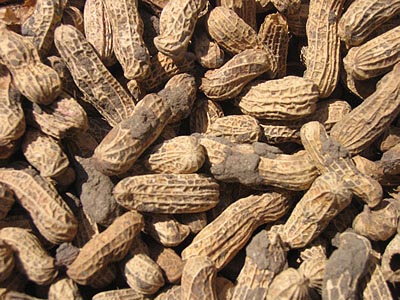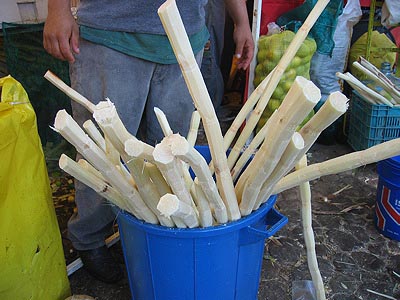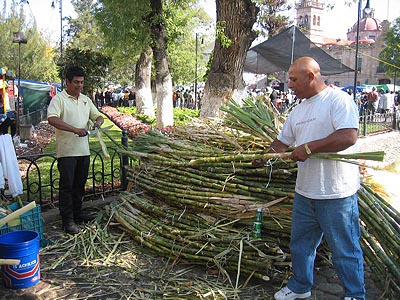
December has two big holidays here: Christmas, and the Day of the Virgin of Guadalupe. I've heard that in some ways the feast of the virgin is actually the bigger event of the two.
Legend has it that in 1531 an Indian peasant Juan Diego Cuauhtlatoatzin was walking near what is now Mexico City when he saw a vision of the virgin who told him (in Nahuatl) to build a church. When he went to the bishop, the bishop was unimpressed and demanded proof that the vision was real. Juan Diego wasn't sure what to do about that, but three days later the virgin reappeared and told him to gather roses on the (barren) hillside and bring them to the bishop. Sure enough, the roses were there so he gathered them in his cape and took them to the bishop. When he dropped his cape to deliver the flowers, a perfect image of the virgin was there, imprinted on his tunic! That original image can still be seen in the Basilica de Gualdalupe near Mexico City. Over the years, the Virgin of Guadalupe has become the most revered figure in Mexican Catholicism.
On December 12, people come from all around to visit the Sanctuario de Guadalupe.
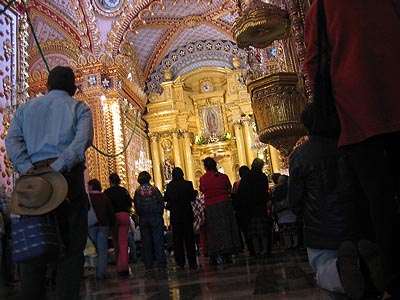
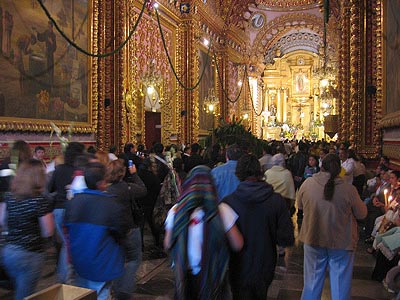
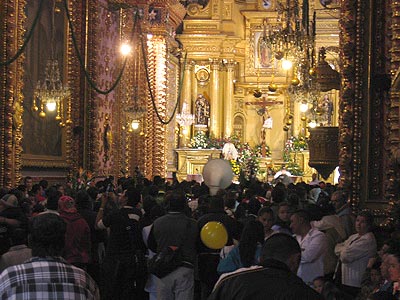
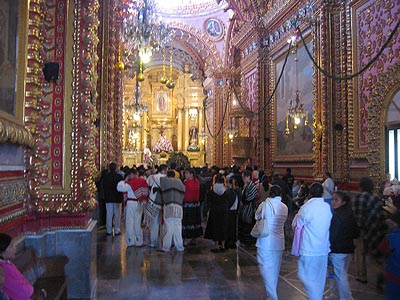
While we sat in the back of the church, hundreds of people entered. Parents "crossed" their babies and taught their toddlers how to cross themselves. They would process to the front of the church where they would briefly pray and the priest would sprinkle them with holy water, and they would exit through a side door. People in the back (with us) were reciting prayers, counting them with their rosaries. Occasionally, singing would break out, with a leader singing a line and the crowd repeating it. This went on for hours and hours, days in fact. By the end, I suspect that tens of thousands of people came through this church.
The night of the 11th and into the morning of the 12th was marked by continual fireworks and explosions all around the city. After they reached a crescendo around 4:30 am, I gave up sleeping for the rest of the night!
Perigrinacions (pilgrimmages) down the Calzada started 46 days earlier with a small dedicated group of worshippers walking down the calzada saying the rosary. (The 46 days are for the number of stars on the Virgin's cape). Here it is on day 1, at the end of October.
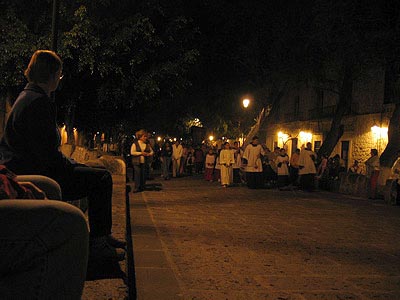
As Dec. 12th approached, the number of people grew and the merchants started setting up tianguis in the plaza to sell food and games. By the 11th there was a constant stream of people making their way to the church, both morning and evening.
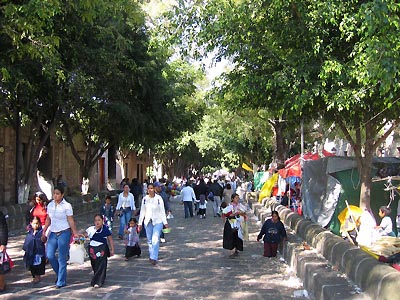
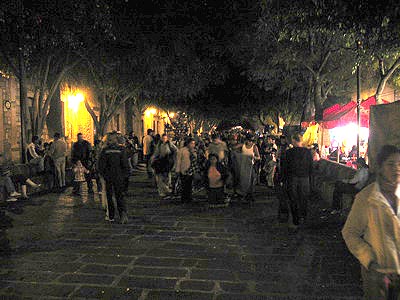
Some people even crawl down the long calzada on their knees as a way of giving thanks for prayers answered (you can see two of them in the photos above, if you look carefully). The cobbled stones are rough and it must hurt tremendously by the time they reach the altar. Almost all have a friend or family member their to support them, by holding their arms, or by laying out blankets for them to crawl on. Most of the people crawling have a rosary in one hand and they pray the entire time they crawl toward the church. Many people are grimacing as they crawl; most are very focused and serene.
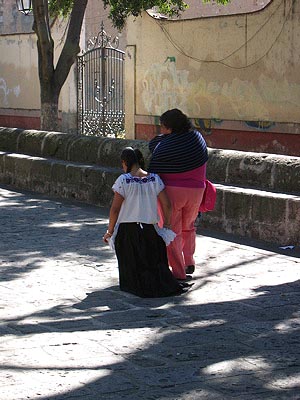

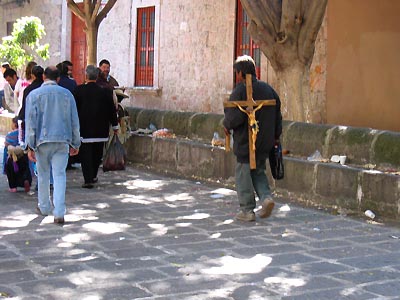
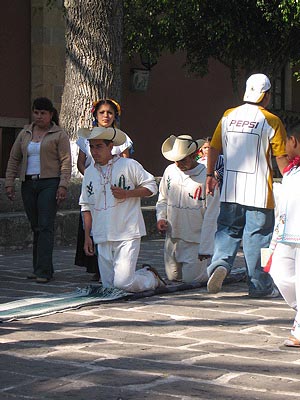
Family and community groups often parade to the church carrying picture of the virgin or enormous wreaths of flowers. Some even had brass bands accompanying them on their pilgrimage and even into the church. (You can see one of the sousaphones towering over the crowd in one of the pictures above).
Here is where all of the wreaths and offerings go (behind the church), to make room for more that keep coming!
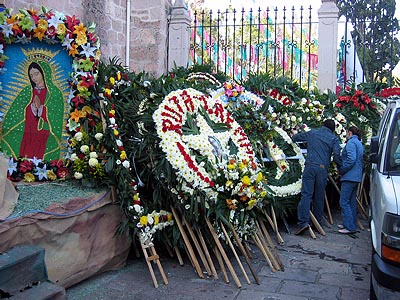
December 12 is also a time to dress up in the traditional costumes of San Juan Diego or his contemporaries. In the market there are many booths that sell costumes for the children (and adults). Women mostly wear the traditional bloused shirt, apron, and shawl with colorful ribbons in their braids. The boys dress up in white pants and shirt with staw hat, poncho, and a painted on mustache.
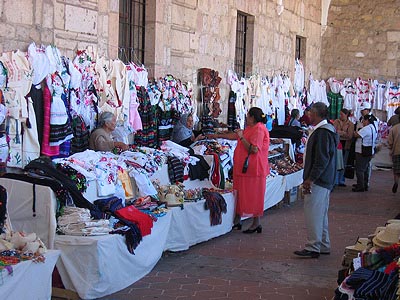
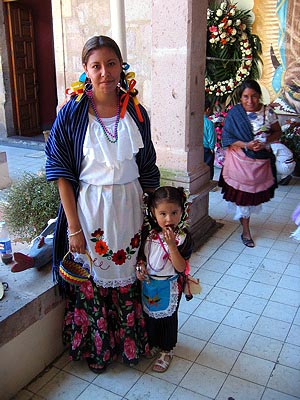
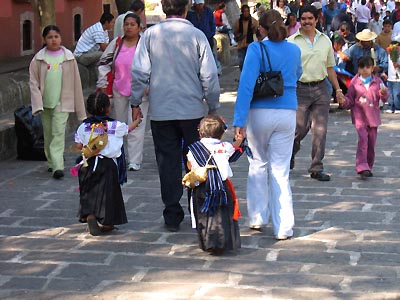
Outside the church, photographers have set up booths, each with its own little scene, so children (and sometimes parents) can be photographed in their costumes.
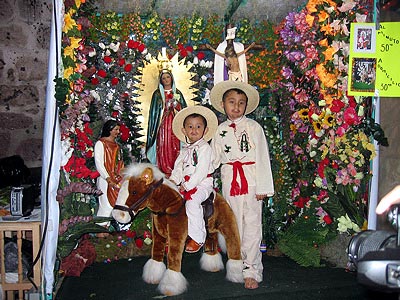

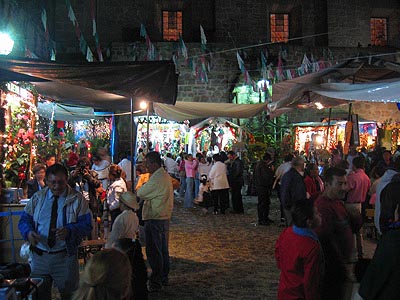
The bishop said mass in the plaza outside the church
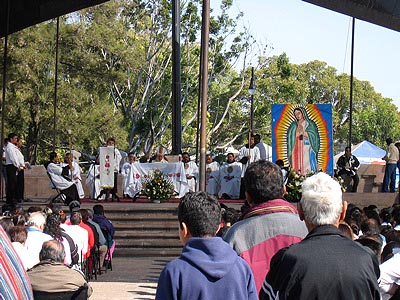
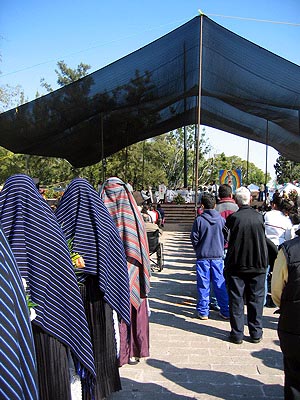
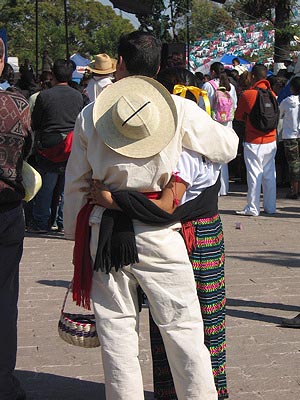
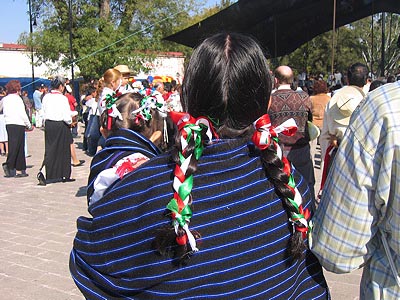
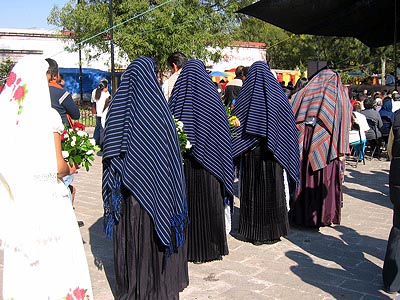
The plaza outside is more like a county fair than a religious event (the newspaper called it the "pagan" part). Vendors of all kinds have set up booths to sell everything from food to pirated CDs, to rides on a ferris wheel.
Two of the traditional foods are peanuts and sugar cane (the latter is often covered in chili powder!). But we also enjoyed the tacos and quesadillas and posole and atole and ponche and frozen strawberries, and . . .
